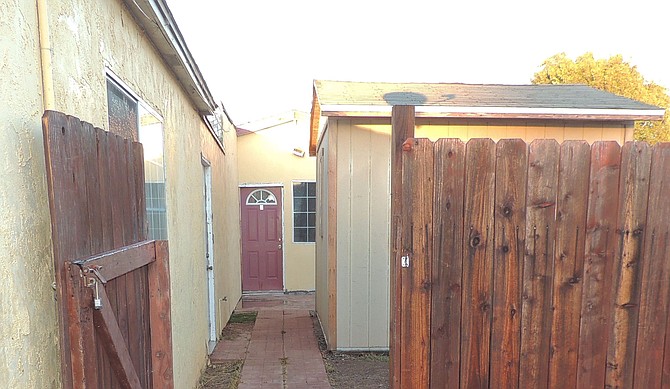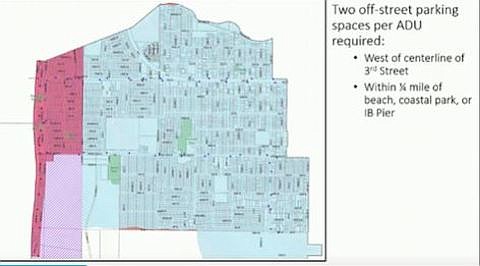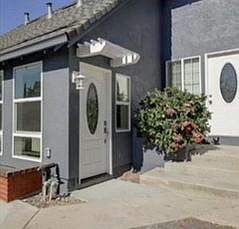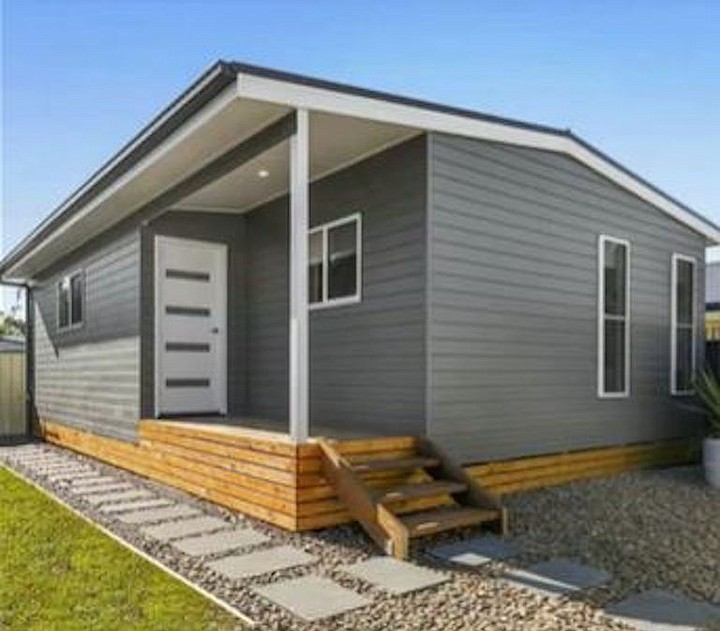 Facebook
Facebook
 X
X
 Instagram
Instagram
 TikTok
TikTok
 Youtube
Youtube

As a small crowded coastal town, Imperial Beach is short on both parking and affordable housing. Some fear the state's new laws that make it easier to build granny flats will make it worse.
Families are already doubling up, said Imperial Beach Mayor Serge Dedina. "They have multiple cars. Replicate that on every street."

Last week, the city approved a draft ordinance updating their granny flat rules, a requirement to stay in compliance with state housing laws - only it's not in compliance.
To create more parking, the city has proposed some exceptions to the rules.
For sizing and setbacks, planners sought to incorporate state laws into the new development standards.
Accessory dwelling units and junior accessory dwelling units are now permitted by-right, without a public hearing, in all residential or mixed-use zones.
Single family lots can have one accessory dwelling and one junior accessory dwelling. If a lot has two or more single family homes, only one unit is allowed, internal or detached. Multifamily properties can have at least one internal accessory dwelling unit, and up to two that are detached.

The city will prohibit short-term rentals, and if there's a junior unit, the owner must live in it or the main house. Accessory units should match the main house in style, color and materials.
While there's wiggle room over design rules, state law sets minimum standards, saying cities can't prohibit an accessory dwelling up to 16 feet high, a floor area up to 800 square feet, or four-foot side and rear yards.
For height, planners proposed 16 feet for detached and attached units, and internal units no higher than the main house. They came up with two alternatives, the first allowing the accessory unit to be as high as the main house, as long as parking is provided on the ground floor of the unit.
The other, which the city council rejected, provided no parking benefit to the community.

Setback options were proposed for buildings over 16 feet. The city can pass development regulations with increased setbacks, beyond the state's four-foot setback line, "as long as we provide for a 16-foot building," said Tyler Foltz, community development director.
What's proposed in the alternative is that "any portion that exceeds that 16 feet would have to be set in to meet our underlying zoning, which could be anywhere from 5-10 feet."
Also known as a "step back," it's seen in the city's commercial and high density zones, meant to separate buildings.
For junior accessory dwelling units, planners proposed size limits of 150-500 square feet. Accessory dwellings can't be smaller than 150 square feet or bigger than 50 percent of the primary home's size. A one-bedroom must be at least 850 square feet and a two-bedroom, 1000 square feet.
However, there's an incentive If a property owner provides extra parking. The city has proposed an increased size - up to 1200 square feet - for granny flats that provide additional parking, city consultant Katie Matchett said.
"That brings us to everybody's favorite topic, parking."
There are a slew of standards for ADU (accessory dwelling unit) parking that come from state law, she said. First, if parking is provided as part of construction of an ADU, it can be tandem parking, to squeeze some extra spaces onto a property.
If existing parking is removed for a conversion, say, a garage to an accessory dwelling unit, "under state law and the ordinance you would not be required to replace that parking."
Then there are "a whole bunch of scenarios where no off street parking can be required for ADUS." For example, any granny flat within 1/2 mile of transit, within a historic or architecturally significant district, or within a block of a car share.
"Basically the entire city falls under that standard" for being within 1/2 mile of transit. "So effectively under state law we cannot require off street parking for any ADUs in the city."
But that's the plan the city will put forward when the ordinance is introduced at the December 1 meeting.
"We have proposed an exception in this ordinance, because we understand there is especially high demand for parking at the coast, and we need to provide access to the public."
So, for each accessory dwelling unit west of centerline of 3rd Street and within 1/4 mile of the beach, coastal park or the IB pier, two off street parking spaces will be required.
"We're superseding state law," the mayor warned, saying he worried about the city becoming a test case. Those who live in other parts of the city, where no parking is required (or can be found), might find it unfair, favoring wealthier beach-area homeowners who can afford to build up.
"It's a little bit tricky because state law is kind of in conflict here," Matchett said. "On the one hand you need to provide access to the coast. In the Coastal Commission's view that means providing parking at the coast. Then there's ADU law that says no parking for ADUS."
Because there's this conflict at the highest levels of state law, compromises have occurred around parking in busy areas along the coast, she said. The Coastal Commission recently allowed Pismo Beach to carve out extra parking for accessory dwellings. So far, Housing and Community Development hasn't challenged it.
"So we hope this strategy will pass muster with them, as well."


As a small crowded coastal town, Imperial Beach is short on both parking and affordable housing. Some fear the state's new laws that make it easier to build granny flats will make it worse.
Families are already doubling up, said Imperial Beach Mayor Serge Dedina. "They have multiple cars. Replicate that on every street."

Last week, the city approved a draft ordinance updating their granny flat rules, a requirement to stay in compliance with state housing laws - only it's not in compliance.
To create more parking, the city has proposed some exceptions to the rules.
For sizing and setbacks, planners sought to incorporate state laws into the new development standards.
Accessory dwelling units and junior accessory dwelling units are now permitted by-right, without a public hearing, in all residential or mixed-use zones.
Single family lots can have one accessory dwelling and one junior accessory dwelling. If a lot has two or more single family homes, only one unit is allowed, internal or detached. Multifamily properties can have at least one internal accessory dwelling unit, and up to two that are detached.

The city will prohibit short-term rentals, and if there's a junior unit, the owner must live in it or the main house. Accessory units should match the main house in style, color and materials.
While there's wiggle room over design rules, state law sets minimum standards, saying cities can't prohibit an accessory dwelling up to 16 feet high, a floor area up to 800 square feet, or four-foot side and rear yards.
For height, planners proposed 16 feet for detached and attached units, and internal units no higher than the main house. They came up with two alternatives, the first allowing the accessory unit to be as high as the main house, as long as parking is provided on the ground floor of the unit.
The other, which the city council rejected, provided no parking benefit to the community.

Setback options were proposed for buildings over 16 feet. The city can pass development regulations with increased setbacks, beyond the state's four-foot setback line, "as long as we provide for a 16-foot building," said Tyler Foltz, community development director.
What's proposed in the alternative is that "any portion that exceeds that 16 feet would have to be set in to meet our underlying zoning, which could be anywhere from 5-10 feet."
Also known as a "step back," it's seen in the city's commercial and high density zones, meant to separate buildings.
For junior accessory dwelling units, planners proposed size limits of 150-500 square feet. Accessory dwellings can't be smaller than 150 square feet or bigger than 50 percent of the primary home's size. A one-bedroom must be at least 850 square feet and a two-bedroom, 1000 square feet.
However, there's an incentive If a property owner provides extra parking. The city has proposed an increased size - up to 1200 square feet - for granny flats that provide additional parking, city consultant Katie Matchett said.
"That brings us to everybody's favorite topic, parking."
There are a slew of standards for ADU (accessory dwelling unit) parking that come from state law, she said. First, if parking is provided as part of construction of an ADU, it can be tandem parking, to squeeze some extra spaces onto a property.
If existing parking is removed for a conversion, say, a garage to an accessory dwelling unit, "under state law and the ordinance you would not be required to replace that parking."
Then there are "a whole bunch of scenarios where no off street parking can be required for ADUS." For example, any granny flat within 1/2 mile of transit, within a historic or architecturally significant district, or within a block of a car share.
"Basically the entire city falls under that standard" for being within 1/2 mile of transit. "So effectively under state law we cannot require off street parking for any ADUs in the city."
But that's the plan the city will put forward when the ordinance is introduced at the December 1 meeting.
"We have proposed an exception in this ordinance, because we understand there is especially high demand for parking at the coast, and we need to provide access to the public."
So, for each accessory dwelling unit west of centerline of 3rd Street and within 1/4 mile of the beach, coastal park or the IB pier, two off street parking spaces will be required.
"We're superseding state law," the mayor warned, saying he worried about the city becoming a test case. Those who live in other parts of the city, where no parking is required (or can be found), might find it unfair, favoring wealthier beach-area homeowners who can afford to build up.
"It's a little bit tricky because state law is kind of in conflict here," Matchett said. "On the one hand you need to provide access to the coast. In the Coastal Commission's view that means providing parking at the coast. Then there's ADU law that says no parking for ADUS."
Because there's this conflict at the highest levels of state law, compromises have occurred around parking in busy areas along the coast, she said. The Coastal Commission recently allowed Pismo Beach to carve out extra parking for accessory dwellings. So far, Housing and Community Development hasn't challenged it.
"So we hope this strategy will pass muster with them, as well."
Comments